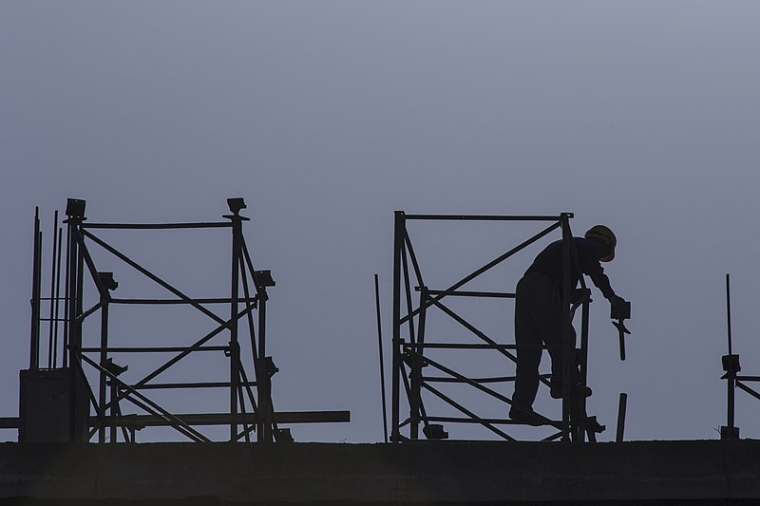
The construction sector "remains under significant pressure," with building firms operating at an average of less that two thirds capacity, according to the EBOSS 2025 Builder Sentiment Report.
The report draws its data from a survey 431 NZ building firms and is funded by the BRANZ Research Levy.
It found that across the entire sector, the average operating capacity was 64%, down from 67% last year and 83% in 2022.
Exactly half of builders were operating at less than 75% of capacity and almost a quarter (24%) were operating at less than 50% capacity.
At the other end of the scale, 20% of builders were operating at full capacity, but that was down from 45% in 2022.
"Builders report that almost all aspects of managing a construction business have become more difficult over the past year, particularly maintaining profit margins and keeping the pipeline of work full," EBOSS said in its summary of the report.
But it also pointed to firms adapting to the current tough conditions.
"The industry is learning to navigate persistent risks, with many builders accustomed to managing project delays, cancellations and cost pressures," the summary said.
Malcolm Fleming, the chief executive of NZ Certified Builders Association, said the survey showed the industry was still doing it tough, but the ability of small and medium sized builders to adapt was impressive.
""As new home build projects dried up, our members have shifted into doing more alterations and additions, the one area of the market where demand held firm," he said.
"They also took on light commercial work, school projects and flood and cyclone remediation work.
"It was driven by needs-must, but made possible because being trade qualified meant they could take on more technical areas of work such as additions and alterations.
"That resilience has been a bright spot across this two year downturn," Fleming said.
However the report also found that builders were concerned about their ability to hire qualified staff and apprentices once the market started to recover again.
"Cost pressures, economic uncertainty and competition for skilled staff remain top concerns for the sector," EBOSS Managing Director Matthew Duder said.
"The data confirms that the biggest competitor to NZ builders for staff is Australia, and this competition is set to intensify as Australia ramps up construction ahead of the 2032 Brisbane Olympics," he said.
The industry was particularly concerned about its ability to recruit apprentices once work levels started picking up.
According to BCITO, the organisation that manages builder apprenticeships, the number of apprentices being trained was down by 25% compared to the peak in 2022.
"The industry is urging young people and those looking for a career change to consider construction, as the sector anticipates a rapid increase in demand for skilled workers when the market turns," Duder said.
The comment stream on this article is now closed.
4 Comments
What fraction of total home building in NZ is 6000 homes a year? That was the number social-housing homes that Kainga Ora was delivering until it was suddenly stopped and is now selling land and half finished projects to private sector developers.
There were an estimated 45,000 homes completed last year: 6000/45,000 = 0.13 = 13%.
Projected current and future homes completed per year has been deliberately reduced by 13% by this government.
The only other Keynesian in NZ - Bernard Hickey:
"The trouble is his initial actions in cancelling 212 Kāinga Ora projects to build 3,479 homes has shattered the construction sector’s momentum, forcing hundreds of firms into liquidation and 17,000 builders out of the industry and/or country. Recruiters and builders report the situation is as bad as the early 1990s.The trouble is his initial actions in cancelling 212 Kāinga Ora projects to build 3,479 homes has shattered the construction sector’s momentum, forcing hundreds of firms into liquidation and 17,000 builders out of the industry and/or country. Recruiters and builders report the situation is as bad as the early 1990s."
Once upon a time the govt, Labour I think, had a scheme whereby Doctors could write of all or most of their loan by staying in NZ for five? years after graduating or after their house manship.. Similar should be done with apprentices whereby the govt pays the apprentice company or the individual to complete an apprenticeship "free" of charge so neither the employer or apprenticeship are at a financial loss for the duration of the apprenticeship. Payback is working in the country for six or seven years.
NZ debt to GDP is around 40% much lower than the UK and US at over a 100% and Japan at 250%.
Plenty of headroom for countercyclical spending on infrastructure and housing - like Australia and the rest of our peers - no other government has managed to sustain a recession for 2 years except the current NZ government.


We welcome your comments below. If you are not already registered, please register to comment.
Remember we welcome robust, respectful and insightful debate. We don't welcome abusive or defamatory comments and will de-register those repeatedly making such comments. Our current comment policy is here.